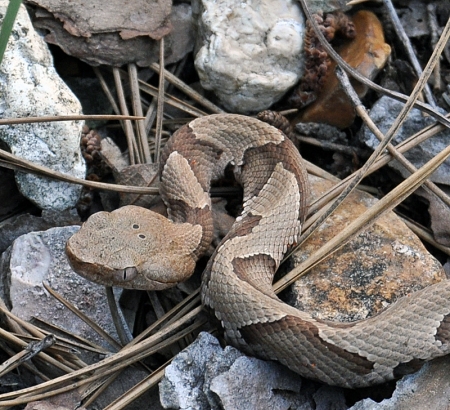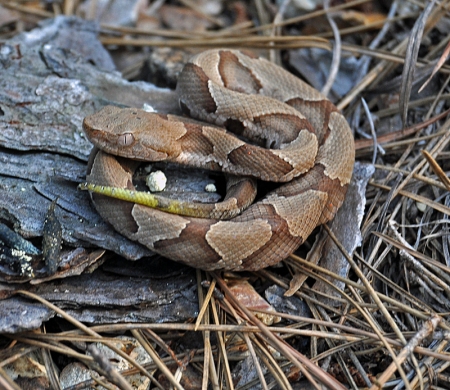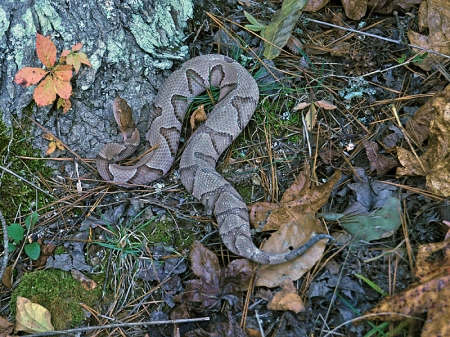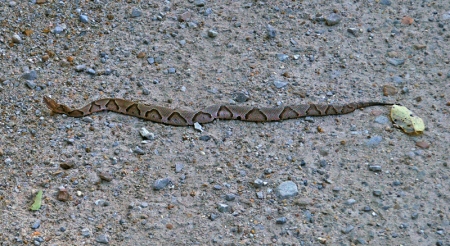Uh oh, scary dangerous snake, yes? That’s how most people react to snakes. Would it help if I let you know that the snake in the photo was roughly six inches long and about the diameter of a number 2 pencil? Unless you’re a “snake person,” probably not.
I found this very young Copperhead on my car port, almost underneath my truck and halfway between the front tire and driver’s door. In the nearly darkness of very early morning, as I was leaving for work, still half asleep. This was early last October, he was probably looking for a place to den up for the winter and I was not expecting him, so I got an early morning adrenalin rush. Works better than coffee, but not as much fun.
Most folks from this area would have immediately killed him with the first yard implement handy. Fortunately for this little guy, I’m not like most folks. I (carefully) moved him to a terrarium where I kept him for a week, hoping to see him feed. Grasshoppers were all I could find to offer him and they went unmolested. He apparently had a more refined palate. I eventually gave up since he needed to be released soon to allow him time to find a place to wait out the coming cold weather. Luckily, we’re surrounded by the Mark Twain National Forest and a suitable location wasn’t hard to find.
Both photos (and plenty more) were taken when he was released. Notice the yellow tail which is wriggled about in an attempt to lure potential prey into striking range, a tactic called “caudal luring”. The yellow coloring is a juvenile trait, but adults will also try to lure prey with their tails. As the snake reaches adulthood, the tail becomes dark grey, almost black and tapers very abruptly from the rest of the body, so when it’s wriggled around it looks very much like a worm, attractive to a host of potential meals.
Copperheads are not the only snake to use this technique, not by a long shot. The Cottonmouth, a close relative, shares both the juvenile tail coloration and use of the caudal luring. I don’t remember reading of an instances of adult Cottonmouths employing caudal luring, but it wouldn’t surprise me to discover that they do so.
To see this tactic taken to an evolutionary extreme, we need to consider Pseudocerastes urarachnoides, a viper from Iran.
That is one of the most amazing things I’ve ever seen and yet, it’s also creepy as hell. Nature will never cease to astound me.



